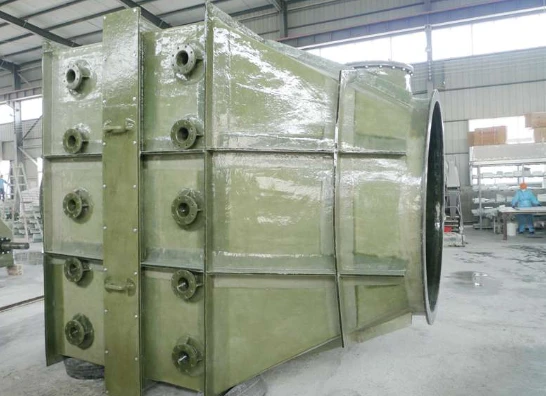
-
 Afrikaans
Afrikaans -
 Albanian
Albanian -
 Amharic
Amharic -
 Arabic
Arabic -
 Armenian
Armenian -
 Azerbaijani
Azerbaijani -
 Basque
Basque -
 Belarusian
Belarusian -
 Bengali
Bengali -
 Bosnian
Bosnian -
 Bulgarian
Bulgarian -
 Catalan
Catalan -
 Cebuano
Cebuano -
 China
China -
 China (Taiwan)
China (Taiwan) -
 Corsican
Corsican -
 Croatian
Croatian -
 Czech
Czech -
 Danish
Danish -
 Dutch
Dutch -
 English
English -
 Esperanto
Esperanto -
 Estonian
Estonian -
 Finnish
Finnish -
 French
French -
 Frisian
Frisian -
 Galician
Galician -
 Georgian
Georgian -
 German
German -
 Greek
Greek -
 Gujarati
Gujarati -
 Haitian Creole
Haitian Creole -
 hausa
hausa -
 hawaiian
hawaiian -
 Hebrew
Hebrew -
 Hindi
Hindi -
 Miao
Miao -
 Hungarian
Hungarian -
 Icelandic
Icelandic -
 igbo
igbo -
 Indonesian
Indonesian -
 irish
irish -
 Italian
Italian -
 Japanese
Japanese -
 Javanese
Javanese -
 Kannada
Kannada -
 kazakh
kazakh -
 Khmer
Khmer -
 Rwandese
Rwandese -
 Korean
Korean -
 Kurdish
Kurdish -
 Kyrgyz
Kyrgyz -
 Lao
Lao -
 Latin
Latin -
 Latvian
Latvian -
 Lithuanian
Lithuanian -
 Luxembourgish
Luxembourgish -
 Macedonian
Macedonian -
 Malgashi
Malgashi -
 Malay
Malay -
 Malayalam
Malayalam -
 Maltese
Maltese -
 Maori
Maori -
 Marathi
Marathi -
 Mongolian
Mongolian -
 Myanmar
Myanmar -
 Nepali
Nepali -
 Norwegian
Norwegian -
 Norwegian
Norwegian -
 Occitan
Occitan -
 Pashto
Pashto -
 Persian
Persian -
 Polish
Polish -
 Portuguese
Portuguese -
 Punjabi
Punjabi -
 Romanian
Romanian -
 Russian
Russian -
 Samoan
Samoan -
 Scottish Gaelic
Scottish Gaelic -
 Serbian
Serbian -
 Sesotho
Sesotho -
 Shona
Shona -
 Sindhi
Sindhi -
 Sinhala
Sinhala -
 Slovak
Slovak -
 Slovenian
Slovenian -
 Somali
Somali -
 Spanish
Spanish -
 Sundanese
Sundanese -
 Swahili
Swahili -
 Swedish
Swedish -
 Tagalog
Tagalog -
 Tajik
Tajik -
 Tamil
Tamil -
 Tatar
Tatar -
 Telugu
Telugu -
 Thai
Thai -
 Turkish
Turkish -
 Turkmen
Turkmen -
 Ukrainian
Ukrainian -
 Urdu
Urdu -
 Uighur
Uighur -
 Uzbek
Uzbek -
 Vietnamese
Vietnamese -
 Welsh
Welsh -
 Bantu
Bantu -
 Yiddish
Yiddish -
 Yoruba
Yoruba -
 Zulu
Zulu
frp dual layer composite product
Exploring FRP Dual Layer Composite Products Advantages and Applications
Fiber Reinforced Polymer (FRP) dual layer composite products have gained significant traction in various industries due to their unique combination of properties
. These innovative materials are engineered to enhance performance and durability while reducing weight, making them suitable for diverse applications ranging from construction to automotive and aerospace.The essence of FRP dual layer composites lies in their structure, which consists of two distinct layers. The outer layer is typically made of high-strength fibers such as glass, carbon, or aramid, which provide excellent tensile strength and stiffness. This layer is bonded to an inner layer made of a polymer matrix that offers flexibility, corrosion resistance, and shock absorbance. This dual-layer configuration not only balances strength and flexibility but also enhances the overall functional performance of the material.
One of the most significant advantages of FRP dual layer composites is their lightweight nature. Traditional materials like steel and concrete are heavy and cumbersome, which can lead to high transportation and installation costs. In contrast, FRP composites are much lighter, allowing for easier handling and installation. This quality is particularly advantageous in applications where weight reduction is critical, such as in the aerospace and automotive sectors, where even a small decrease in weight can lead to improved fuel efficiency and performance.
frp dual layer composite product

Moreover, FRP composites boast exceptional resistance to environmental factors such as moisture, chemicals, and UV radiation. This makes them an ideal choice for outdoor and marine applications, as they maintain their integrity and appearance over time. In the construction sector, for instance, FRP dual layer composite products are increasingly used for reinforcing structures and constructing facades, as they extend the lifespan of buildings while minimizing maintenance efforts.
In terms of sustainability, FRP composites present a viable option compared to traditional materials. Their manufacturing processes often consume less energy, and many FRP products are designed for recyclability, contributing to a circular economy. As industries strive to reduce their carbon footprint, the adoption of FRP dual layer composites is likely to grow.
Applications of FRP dual layer composites are vast and varied. In transportation, they are utilized in railway cars, automotive components, and even aircraft structures. In infrastructure, they are used in bridges, tunnels, and piping systems. Additionally, their aesthetic versatility allows for creative designs in architectural applications.
In conclusion, FRP dual layer composite products offer remarkable advantages in terms of weight, strength, durability, and sustainability. As technology continues to evolve and industries become increasingly aware of their environmental responsibilities, the demand for these advanced materials is expected to rise, paving the way for innovative solutions in various fields.









